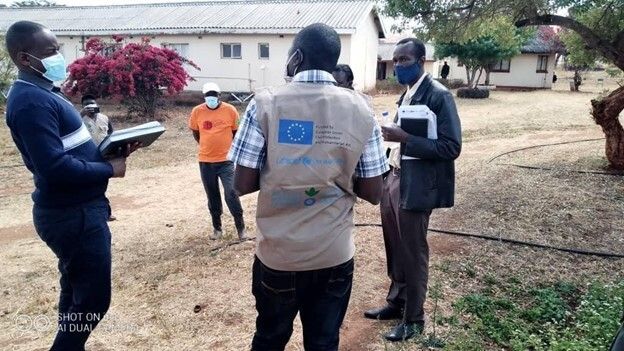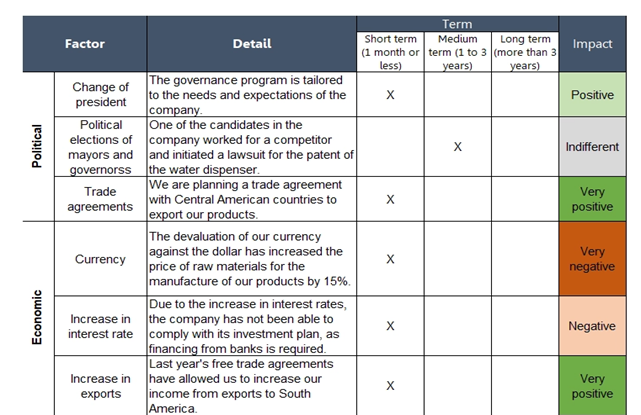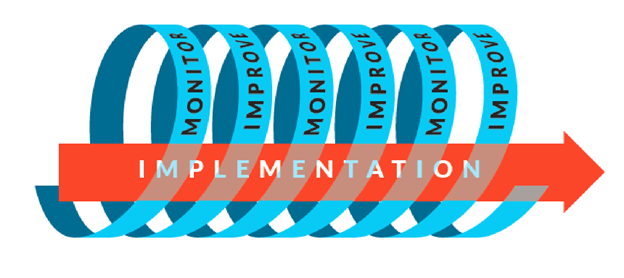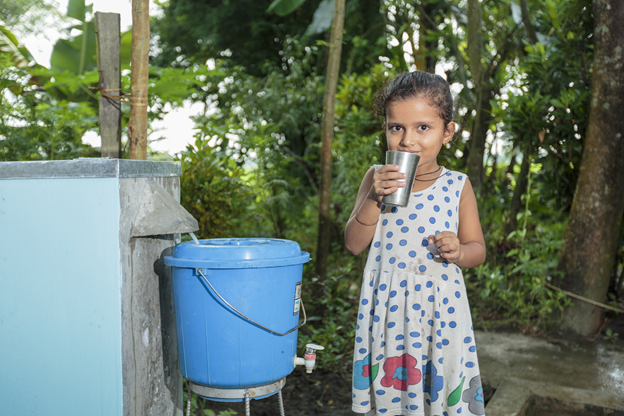Explore Program Design
Stakeholder Analysis Template
A stakeholder analysis is a working document that you start at the beginning of every project and update periodically.
Languages
English
Arabic
French
Spanish
Capacity Development Needs Assessment Toolkit
This capacity development needs assessment Toolkit will support the program to analyze their programs different stakeholders.
Languages
English
Arabic
Spanish
French
Capacity Development Needs Analysis
Capacity is developed on three different levels — individual, organizational, and enabling environments. These instructions will support the program team.
Languages
English
Arabic
French
Spanish
Stakeholder Analysis Instructions
Stakeholder analysis allows program teams to gather information to determine whose interests, priorities, and goals should be considered for a WASH program.
Languages
English
Arabic
French
Spanish
PESTLE Context Assessment Guide
A PESTLE analysis is a form of formative research that allows a program to identify and analyze factors that are or could impact the program.
Languages
English
Arabic
French
Spanish
PESTLE Analysis template
This PESTLE analysis template identifies the factors that could impact the program and provides the space to document the findings.
Languages
English
Arabic
French
Spanish
Logic Framework for Monitoring and Evaluation
This logic framework for monitoring and evaluation is essential to ensuring impact in any program. Ensuring sustainable program goals and behaviours.
Languages
English
Arabic
French
Spanish
Approaches to WASH Program Design
Approaches to program design provides examples of approaches or activities that can be used to create demand to engage with stakeholders.
Languages
English
Arabic
French
Spanish
Data Collection Methods and Tools
Data Collection Methods is a tool to support program design teams with formative research during the analysis phase and throughout their program.
Languages
English
Arabic
French
Spanish
Household Water Treatment Program Design Job Aids
This collection includes job aids that will help you to design, implement, monitor and evaluate your household water treatment program. These practical resources are easy to use and include tools and templates for budgeting, reporting, needs assessment, gap analysis and more.
Languages
English
French
Spanish
Arabic
Program Report Template
This report template offers one example of what a report could include. The following reporting structure may be a useful guide.
Languages
English
Arabic
French
Spanish
Program Reporting Guide
This program reporting guideline supports program teams in reporting essential data, updates and changes. Information was selected from a variety of sources.
Languages
English
Arabic
French
Spanish
Community WASH needs Assessment Survey
A water hygiene and sanitation needs assessment is a review process for determining and addressing essential WASH needs/discrepancies of a community or population.
Languages
English
Arabic
French
Spanish
Community WASH needs Assessment Guide
A water hygiene and sanitation needs assessment guide reviews the basic WASH needs/discrepancies between the current condition and the wanted or required status.
Languages
English
French
Spanish
Arabic
Behaviour Change Needs Assessment
This tool aims to help your program with its formative research by defining the behaviour it wants to change and supporting the program team to gather information.
Languages
English
Spanish
French
Arabic
Lessons Learned Instructions and Template
Lessons learned are an opportunity to reflect on activities or interventions and appreciate what worked well and should be kept or what could be improved.
Languages
English
Arabic
French
Spanish
Gap Analysis Instructions and Template
The gap analysis is used to assist with identifying both the desired or expected state and practices and the current state and practices.
Languages
English
Arabic
French
Spanish
GANTT chart Template
The GANTT chart template provides program designers and managers a visual understanding of a program's tasks and overall schedule spanning the program’s duration.
Languages
English
Arabic
Spanish
French
Program Budgeting Tips
A budget is a communication and planning tool essential for the effective design of any program. This Budgeting Tips Guide supports program design teams.
Languages
English
Arabic
French
Spanish
Budget Template by Activity
This budget template is created as an activity budget. Activity budgets separate the program into smaller groups of activities.
Languages
English
French
Spanish
Arabic
About CAWST
CAWST is a Canadian charity and licensed engineering firm. We address the global need for safe drinking water and sanitation by building local knowledge and skills on household solutions people can implement themselves.


















